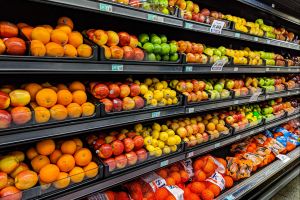As retail-led agricultural marketing systems in emerging economies continue to develop, governments, NGOs, and companies can benefit from each other's experiences and examples to date.
Executive Summary
Rapid urbanization, population growth, and rising incomes in emerging economies are changing local and global food systems. Among these changes is increased demand for food in cities that is affordable and safe. As developing nations liberalize their markets and open their economies to foreign direct investment, international capital has been flowing on an unprecedented scale into the agrifood sector to meet this demand. A key feature of these investments is the transformation of agricultural marketing systems—the services and activities involved in bringing an agricultural product from the farm to the consumer.
Large retailers increasingly have dual objectives within these new, retail-led agricultural marketing systems: 1) increasing efficiency, traceability, and coordination as well as 2) creating value along the food supply chain. Companies aim to accomplish these goals by sourcing “directly” from farmers.
The opportunity for these developments to benefit small farmers in the developing world has appealed to regional and national governments in Asia, Africa, and Latin America as a strategy for fostering rural prosperity. New agricultural marketing systems with more direct sourcing could mean higher incomes for farmers, more resources for farm investment in new technologies and assets, and a pathway out of poverty. A number of largescale food retail companies also see the new systems as a double win, beneficial for the bottom line and prudent for good relations with regional and national governments. To explore these issues, this report looks at the horticulture sourcing activities of Walmart in China and Nicaragua and their impact on smallholder farmers.
Direct sourcing from farmers does not mean purchasing at the farm gate. Intermediaries in retailed supply chains are not eliminated and may include nongovernmental organizations (NGOs) and private intermediary suppliers. The objectives and resources of market intermediaries in retailed supply chains are crucial to determining which farmers participate and how they benefit from participation.
New retail-led agricultural markets can also exacerbate inequalities between rural regions with profitable market opportunities and regions without such advantages. And even amid all the demonstrated and potential benefits for participating farmers, some risks remain.
As these retail-led agricultural marketing systems in emerging economies continue to develop, governments, NGOs, and companies can benefit from the experiences and examples to date. These lessons can help guide policy and practices moving forward in order to maximize the benefits to farmers and help realize the opportunities these systems offer for increasing food security and reducing rural poverty:
For Governments
- Road access and water supplies for agricultural production are critical determinants of farmer participation in new supply chains, a fact that may exacerbate rural inequality.
- Infrastructure development can serve as a means to facilitate greater supply chain participation among small farmers.
- Maintaining small farmer access to land and credit is important to ensure that small farmers participate in new markets, especially women.
- Investments in the traditional market system may also offer a pathway to increasing small farmer outcomes. These investments could include expanding credit opportunities for rural traders or investing in traditional wholesale and wet markets by improving the condition of market buildings, storage, and water and sanitation.
For Companies
- By paying farmers a purchase price between an agreed-upon minimum and maximum, companies can provide farmers with a measure of protection against the price volatility that vexes the traditional horticulture market.
- Price stabilization/insurance afforded to small farmers by supermarket buyers has been associated with increased small farmer investment in production scale and farm assets.
- Firms should be aware of opportunities to design sourcing strategies that encourage the participation of women in supply chains. For example, employing female extension officers or buyers could be an appropriate and impactful way to involve more women farmers.
For NGOs
- Projects designed to build farmer marketing capacity may prove to be a zero-sum game if supermarkets or other supermarket supply chain buyers follow NGO projects (and NGO supply chain subsidies) when the NGO relocates to a new region or a new group of farmers.
- Farmer investment in productive assets during the supply relationship is likely to improve household welfare in lasting ways, especially once the supply relationship ends.
- Given high rates of exit from supply chains, NGOs should consider the implications for small farmers of an abrupt cessation to a retail-led supply relationship.
- Water and road access are critical for participation. Investments by NGOs may bring more marginal farmers into the retail-led supply chain, but these farmers may struggle to continue to participate in the market without NGO support and subvention.


